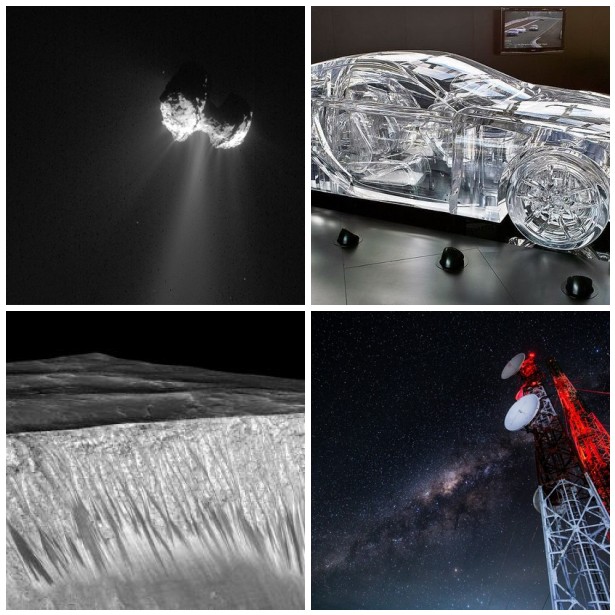Wet Martians Teach Their Cars to Program

Mars, the Supermoon, and US LTE speeds are all wet. How we teach coding, and how the DMCA protects car company’s secrets.
Correction: Glass is not a liquid
By studying a glob of 20 million-year-old amber, scientists have proven once and for all that glass does not flow.
Some people claim that stained glass windows in old churches are thicker at the bottom than at the top because glass flows slowly like a liquid. We
Forcing suspects to reveal phone passwords is unconstitutional, court says
The Fifth Amendment right against compelled self-incrimination would be breached if two insider trading suspects were forced to turn over the passcodes of their locked mobile phones to the Securities and Exchange Commission, a federal judge ruled Wednesday.
“We find, as the SEC is not seeking business records but Defendants’ personal thought processes, Defendants may properly invoke their Fifth Amendment right,” US District Judge Mark Kearney of Pennsylvania wrote.
Water on Mars
Scientists have found what they think is evidence of extant, if brief, flowing water on Mars.
In a NASA press conference on Monday, scientists claimed that images and spectra taken by the Mars Reconnaissance Orbiter
US rank drops to 55th in 4G LTE speeds
The U.S. has fallen to No. 55 in LTE performance as
How the Car Industry Has Hidden Its Software Behind the DMCA
It was by sheer chance that the software “defeat device” that allowed Volkswagen to thwart emission tests on its diesel vehicles was discovered last year. The discovery came after a few university researchers tested a group of European cars made for the U.S. market.
The West Virginia University researchers drove the vehicles for thousands of miles, testing the emissions as they went along. They weren’t expecting to discover what they did: Nitrogen oxide (NOx) emissions rates 20 times the baseline set by the Environment Protection Agency (EPA).
Kickstarter: Crafted in Santa Cruz by Crafted in Santa Cruz

A local (to Santa Cruz) apparel line featuring custom icons of artisanal goods, from craft beer to hand-carved guitars. All to support the wonderful creativity of Santa Cruz
Rosetta's Comet is Actually 2 Comets Glued Together
Scientists have solved the mystery of why the comet being studied by Europe

